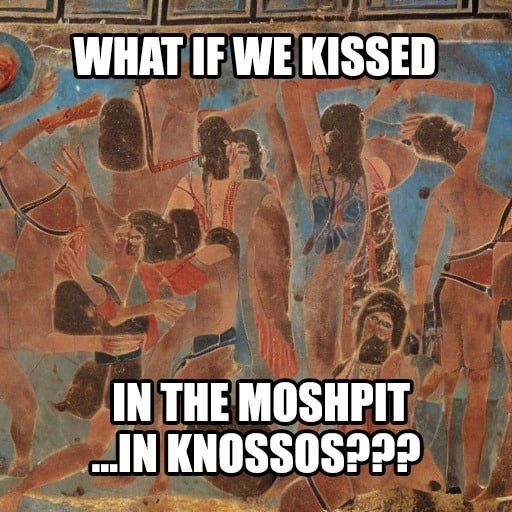Text

KiSS EVERYTHiNG!!! 💕💞
(those who I've romanced so far hehe…)
5K notes
·
View notes
Text

ive seen them have one line of dialogue so far which means theyre best friends cozy duo definitely has sleepovers
793 notes
·
View notes
Text



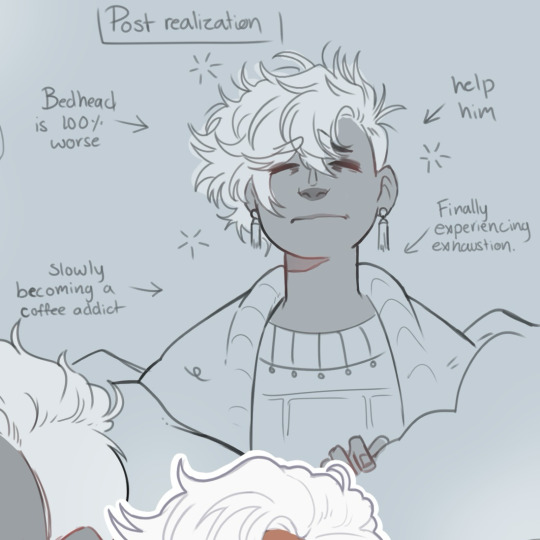
UGHHHH OUR WIFE… OUR BABY.. he lives in my head rent free I cannot escape him.
3K notes
·
View notes
Text

Mateo Manta disease is real bc why hasn’t this man left my head yet?? /lh
1K notes
·
View notes
Text
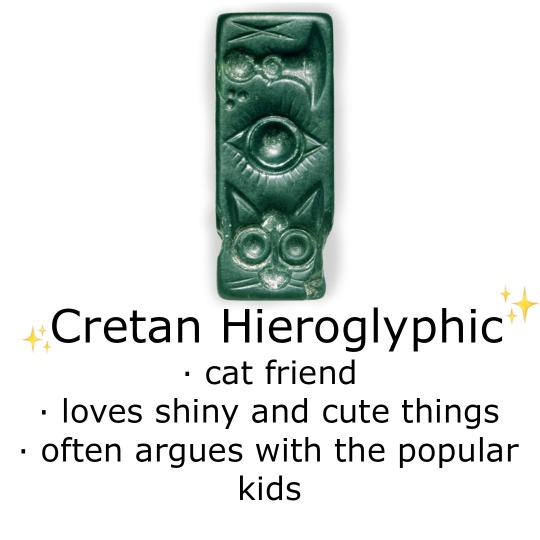
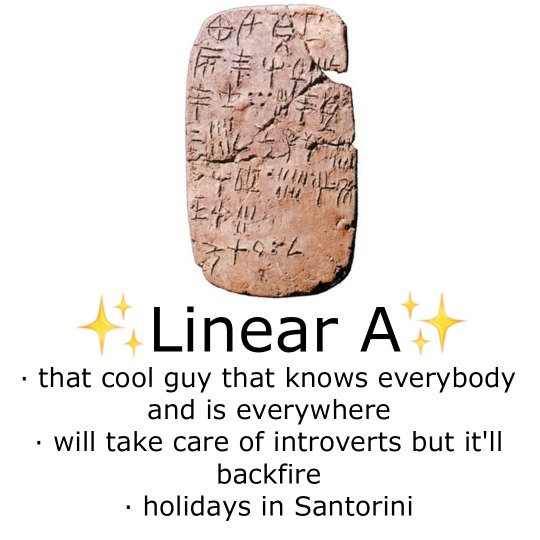


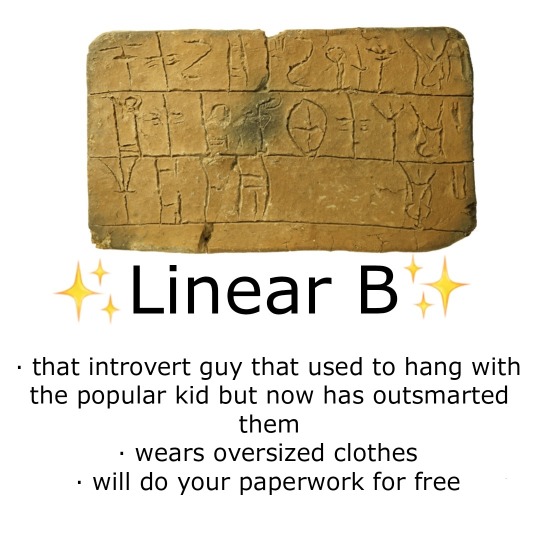

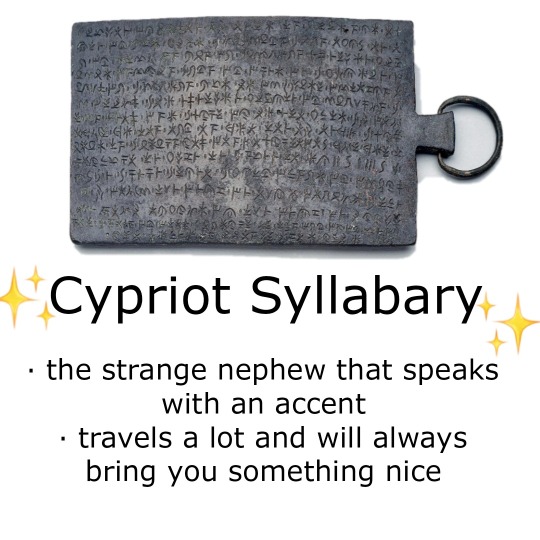
✨ tag yourself ✨ but with Aegean Scripts! Mainly Bronze Age, with a sprinkle of Iron Age (Cypriot Syllabary).
3K notes
·
View notes
Text
TERFs die mad: you just reblogged a nasty transgender person with pronouns and all who did this historical look to explore their cultural history as well as express their own nonbinary identity in a way that resonates with them. An edit I wish I didn’t have to make on this post
I’ll try to post the actual pictures I took soon, but I was bored today and wanted to shirk some other responsibilities, so I decided to do some general vague Minoan or Mycenaean look since it’s been on the mind and also my hair was looking really good today and I wanted to take advantage of that haha
5K notes
·
View notes
Text

they lived, they served cunt, and then disappeared from history
2K notes
·
View notes
Text

This just screamed Ariadne and Dionysus to me, so here’s my take on them!
2K notes
·
View notes
Text

The Toreador Fresco, Knossos Palace, Crete, c.1500 BC
447 notes
·
View notes
Text
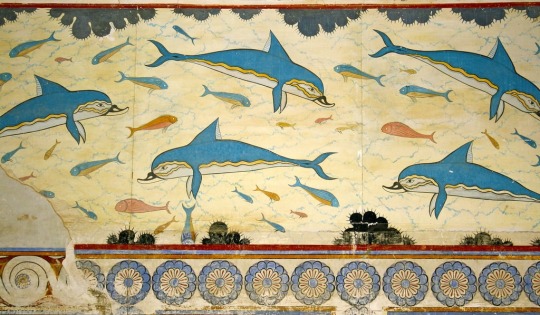
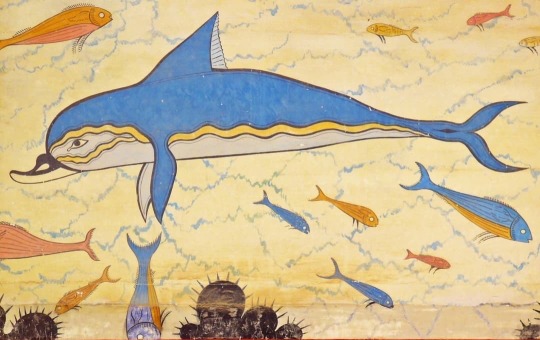
Dolphins Fresco, Palace of Knossos (& detail)
c. 1700-1450 B.C.
3K notes
·
View notes
Text
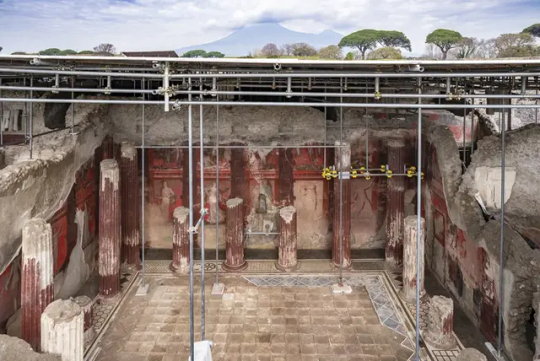

Stunning Frescoes of a Mysterious Dionysian Cult Discovered in Ancient Pompeii
Created more than a century before the eruption of Mount Vesuvius in 79 C.E., the wall paintings provide rare insights into secret rituals conducted in the Roman city.
Archaeologists in Pompeii have uncovered a series of nearly life-size frescoes spanning three walls of an ancient banquet hall. Set against a ruby-red backdrop, the wall paintings depict female followers of Dionysus—the Greek god of wine and ecstasy—engaged in secretive cult rituals.

Also known as maenads or bacchantes, the women have swords in their hands and slaughtered animals draped across their bare shoulders. Alongside flute-piping satyrs, they’re engaged in a wild, ritualistic dance, while shellfish, eels, squid and poultry dangle above them. In the center of it all, a clothed woman awaits her initiation into the cult.
Pompeii is full of colorful frescoes, but this one is particularly rare. The only other large wall painting depicting a Dionysian ceremony was unearthed in the so-called Villa of the Mysteries in the ancient city’s suburbs in 1909, according to a statement from the Pompeii Archaeological Park.
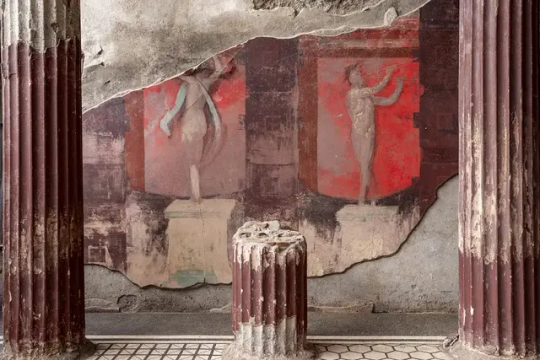
Known as a megalography—a Greek term for a large-scale painting—the banquet hall fresco was uncovered at the newly excavated House of Thiasus. It dates to the first century B.C.E., more than 100 years before Mount Vesuvius erupted in 79 C.E. and cast pumice and ash down upon Pompeii.
“In 100 years’ time, today will be remembered as historic,” Alessandro Giuli, the Italian culture minister, told reporters at the unveiling of the wall paintings on Wednesday, per Reuters’ Crispian Balmer. “Alongside the Villa of the Mysteries, this fresco forms an unparalleled testament to the lesser-known aspects of ancient Mediterranean life.”
As Giuli suggests, the festivals depicted in the frescoes were thoroughly secretive, even in antiquity.
“These were mystery cults, so what they did remains a mystery, even in the ancient written sources,” Sophie Hay, an archaeologist at Pompeii, tells the London Times’ Philip Willan.

Even so, the frescoes at Pompeii offer valuable insights into what worship of Dionysus, also known as the Roman god Bacchus, entailed.
Wine, of course, was central to these festivities. But researchers think cult members may have also consumed other substances, like opium, to enter “trance-like states,” Live Science’s Kristina Killgrove writes.
The women in the fresco are both hunters and dancers, suggesting that the duality of slaughter and revelry was a central tenet. The clothed, mortal woman who is awaiting initiation is depicted as “oscillating between these two extremes, two forms of the female being at the time,” Gabriel Zuchtriegel, director of the archaeological park, says in the statement.

“For the ancients, the bacchante or maenad expressed the wild, untameable side of women; the woman who abandons her children, the house and the city, who breaks free from male order to dance freely, go hunting and eat raw meat in the mountains and the woods,” he adds. In contrast, Zuchtriegel explains, were the women who emulated the goddess Venus and lived by the dictates of Roman society.
“The question is, what do you want to be in life, the hunter or the prey?” Zuchtriegel told reporters at the unveiling.
The hunting scenes may also stand as analogues for life and death. In the House of Thiasus, one woman eats raw meat. At the Villa of Mysteries, one breastfeeds a young goat.
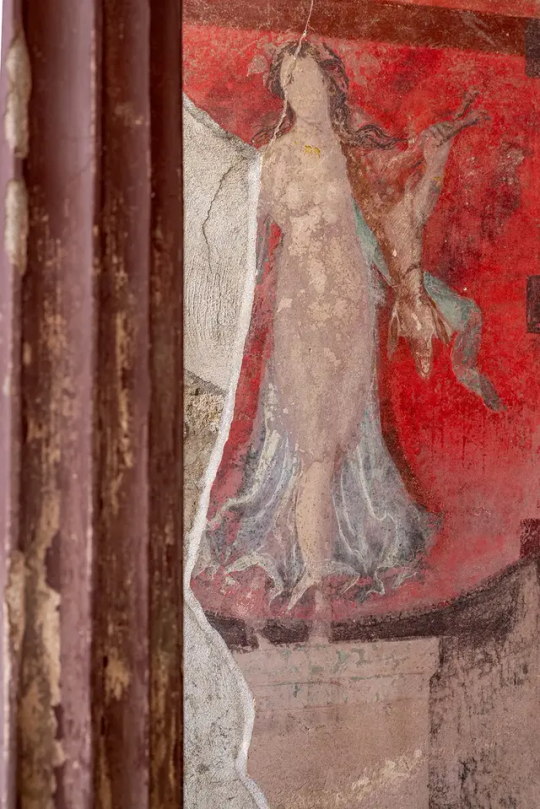
“It’s the double function of death and rebirth. Dionysus dies and is reborn. Through initiation into the cult, you are born again,” Zuchtriegel says to the London Times.
By 186 B.C.E., these festivals were at risk of dying out, as Roman authorities attempted to crack down on the scandalous ceremonies. But the presence of the paintings in the House of Thiasus and the Villa of Mysteries suggest that the secret rituals survived.
Although archaeological work continues, the frescoes are now on public display.
By Eli Wizevich.
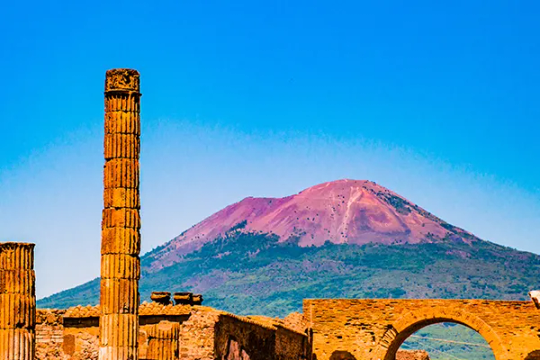

2K notes
·
View notes
Text
-Pros to me doing my field research alone: nobody saw me sprain my ankle by tripping over a gopher hole
-Cons to me doing my field research alone: I keep pointing at bugs/critters going "woah look a cool bug/critter!" and nobody's there to go "woah lemme see!" so I'm really just entertaining myself only
411 notes
·
View notes
Text



realized today is earth day so i'm celebrating with a sketch of one of my favorite birds: the eurasian hoopoe!!
477 notes
·
View notes














